SpaceX, Virgin Orbit and Ferrari join ESA-NASA Advanced Manufacturing event
Monday, 14 February 2022 08:50
Confirmed speakers at next month’s ESA-NASA 1st International Conference on Advanced Manufacturing for Air, Space and Land Transportation include leading technologists from Airbus, Boeing, SpaceX, Virgin Orbit and Ferrari’s Formula 1 team. Registration is now open for the four-day online event, which will include more than 185 speakers from the scientific and engineering communities.
Space stowage in 360° | Cosmic Kiss
Monday, 14 February 2022 08:00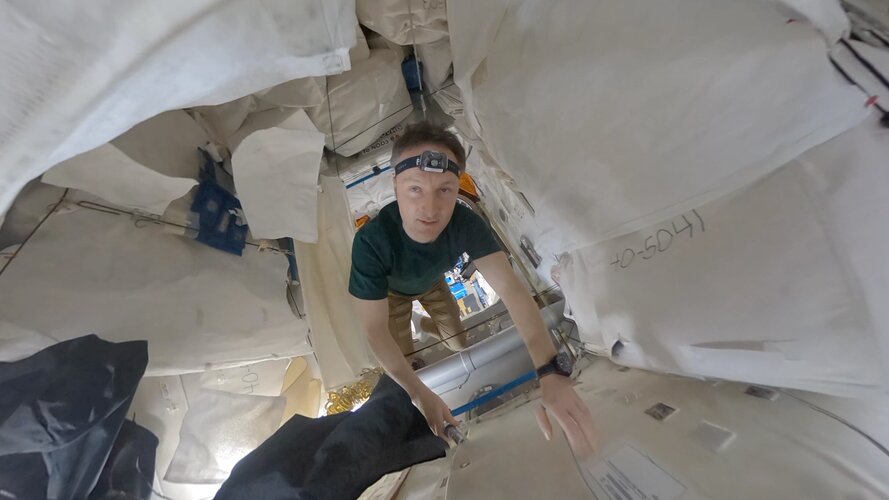 Video:
00:02:36
Video:
00:02:36
Tour the Italian-built Permanent Multipurpose Module (PMM) of the International Space Station in 360° with ESA astronaut Matthias Maurer.
Attached to Node 3, PMM is a large, reusable, pressurised element that was originally used to ferry cargo to and from the Station. It can hold up to 16 racks of equipment, experiments and supplies and has an end-cone with additional storage space for cargo bags, trash and other items.
The only thing PMM has no room for is a fear of enclosed spaces. Watch as Matthias maneuvers between the boxes and bags in this vital module in orbit.
Matthias is
Lockheed Martin terminates agreement to acquire Aerojet Rocketdyne
Sunday, 13 February 2022 23:27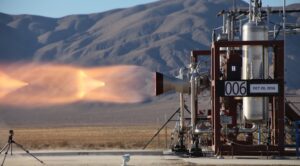
Lockheed Martin announced Feb. 13 it has decided to terminate a $4.4 billion deal to acquire rocket engine manufacturer Aerojet Rocketdyne.
The post Lockheed Martin terminates agreement to acquire Aerojet Rocketdyne appeared first on SpaceNews.
Chinese rocket, not Falcon 9, linked to upper stage on lunar impact trajectory
Sunday, 13 February 2022 18:15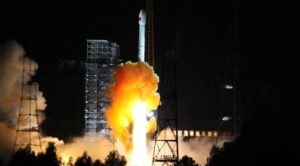
In a case of celestial mistaken identity, a spent upper stage that will crash on the far side of the moon in March is now linked to a Chinese launch in 2014, not a SpaceX launch of an Earth and space science satellite in 2015, illustrating the difficulties in tracking objects beyond Earth orbit.
Webb Is Chilling Out
Sunday, 13 February 2022 10:32 While we have started the long process of aligning the telescope mirrors, almost all of the components on Webb's cold side are still continuing to cool.
Webb's giant sunshield keeps the telescope and cameras out of both direct sunlight and sunlight that is reflected from Earth and the Moon. Everything on the cold side of the sunshield is passively cooling, radiating heat into deep space.
While we have started the long process of aligning the telescope mirrors, almost all of the components on Webb's cold side are still continuing to cool.
Webb's giant sunshield keeps the telescope and cameras out of both direct sunlight and sunlight that is reflected from Earth and the Moon. Everything on the cold side of the sunshield is passively cooling, radiating heat into deep space. Orbital Assembly raises over $1 Million for artificial gravity technology development
Sunday, 13 February 2022 10:32 Orbital Assembly Corporation (OAC) the leader in providing artificial gravity technologies enabling humanity to work, play and thrive in the space ecosystem has raised an additional $1 million to advance its space station facility development.
The company raised the funds on the Netcapital (Reg CF) crowdfunding site after its first successful funding round in 2021. This round is scheduled
Orbital Assembly Corporation (OAC) the leader in providing artificial gravity technologies enabling humanity to work, play and thrive in the space ecosystem has raised an additional $1 million to advance its space station facility development.
The company raised the funds on the Netcapital (Reg CF) crowdfunding site after its first successful funding round in 2021. This round is scheduled Sidus Space books slew of news orders for hardware and services
Sunday, 13 February 2022 10:32 Sidus Space, Inc., a Space-as-a-Service satellite company focused on commercial satellite design, manufacture, launch, and data collection is pleased to announce that it has received over $1.5 million in purchase orders for space hardware and services supporting four customers. The purchase orders received consist of both new orders and a modification to a previous purchase order.
"We are
Sidus Space, Inc., a Space-as-a-Service satellite company focused on commercial satellite design, manufacture, launch, and data collection is pleased to announce that it has received over $1.5 million in purchase orders for space hardware and services supporting four customers. The purchase orders received consist of both new orders and a modification to a previous purchase order.
"We are China welcomes cooperation on space endeavors
Sunday, 13 February 2022 10:32 China always welcomes cooperation on space endeavor, as it adheres to the belief that outer space is a common treasure of humanity, and that its exploration, development and peaceful use are common pursuits of all peoples.
This belief was reiterated by a blue book released Wednesday by the country's space industry flagship China Aerospace Science and Technology Corporation.
The blue
China always welcomes cooperation on space endeavor, as it adheres to the belief that outer space is a common treasure of humanity, and that its exploration, development and peaceful use are common pursuits of all peoples.
This belief was reiterated by a blue book released Wednesday by the country's space industry flagship China Aerospace Science and Technology Corporation.
The blue Webb telescope spots its first star -- and takes a selfie
Sunday, 13 February 2022 10:32 Star light, star bright, the James Webb Space Telescope has seen its first star (though it wasn't quite tonight) - and even taken a selfie, NASA announced Friday.
The steps are part of the months-long process of aligning the observatory's enormous golden mirror that astronomers hope will begin unraveling the mysteries of the early Universe by this summer.
The first picture sent back of
Star light, star bright, the James Webb Space Telescope has seen its first star (though it wasn't quite tonight) - and even taken a selfie, NASA announced Friday.
The steps are part of the months-long process of aligning the observatory's enormous golden mirror that astronomers hope will begin unraveling the mysteries of the early Universe by this summer.
The first picture sent back of Hubble Views a Cosmic Interaction
Sunday, 13 February 2022 10:32 This image from the NASA/ESA Hubble Space Telescope feels incredibly three-dimensional for a piece of deep-space imagery. The image shows Arp 282, an interacting galaxy pair composed of the Seyfert galaxy NGC 169 (bottom) and the galaxy IC 1559 (top). Interestingly, both galaxies have monumentally energetic cores known as active galactic nuclei (AGN), although that is difficult to tell from this
This image from the NASA/ESA Hubble Space Telescope feels incredibly three-dimensional for a piece of deep-space imagery. The image shows Arp 282, an interacting galaxy pair composed of the Seyfert galaxy NGC 169 (bottom) and the galaxy IC 1559 (top). Interestingly, both galaxies have monumentally energetic cores known as active galactic nuclei (AGN), although that is difficult to tell from this Future gravitational wave detector in space could uncover secrets of the Universe
Sunday, 13 February 2022 10:32 New research has shown that future gravitational wave detections from space will be capable of finding new fundamental fields and potentially shed new light on unexplained aspects of the Universe.
Professor Thomas Sotiriou from the University of Nottingham's Centre of Gravity and Andrea Maselli, researcher at GSSI and INFN associate, together with researchers from SISSA, and La Sapienza of
New research has shown that future gravitational wave detections from space will be capable of finding new fundamental fields and potentially shed new light on unexplained aspects of the Universe.
Professor Thomas Sotiriou from the University of Nottingham's Centre of Gravity and Andrea Maselli, researcher at GSSI and INFN associate, together with researchers from SISSA, and La Sapienza of Raytheon Intelligence and Space completes Next Gen OPIR GEO Block 0 Milestone
Sunday, 13 February 2022 10:32 Raytheon Intelligence and Space has completed Thermal Vacuum Testing of its sensor payload for the U.S. Space Force's Next-Generation Overhead Persistent Infrared, or Next-Gen OPIR GEO, Block 0 missile warning satellites designed and built by spacecraft prime contractor Lockheed Martin. Testing was completed on Jan. 27, 2022.
"Space is a dynamic environment. Ensuring our instruments are pr
Raytheon Intelligence and Space has completed Thermal Vacuum Testing of its sensor payload for the U.S. Space Force's Next-Generation Overhead Persistent Infrared, or Next-Gen OPIR GEO, Block 0 missile warning satellites designed and built by spacecraft prime contractor Lockheed Martin. Testing was completed on Jan. 27, 2022.
"Space is a dynamic environment. Ensuring our instruments are pr Declining value of space SPACs could trigger mergers and acquisitions
Saturday, 12 February 2022 23:52
Space companies that went public in the last year only to see their valuation drop precipitously may soon become targets of acquisitions.
The post Declining value of space SPACs could trigger mergers and acquisitions appeared first on SpaceNews.
U.S. intelligence wants to track currently undetectable orbital space debris
Saturday, 12 February 2022 19:04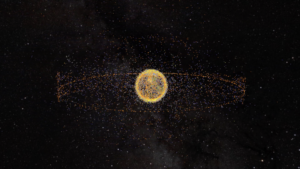
The Intelligence Advanced Research Projects Activity in a request for information asks for 'innovative approaches to detect and track currently undetectable orbital space debris'
The post U.S. intelligence wants to track currently undetectable orbital space debris appeared first on SpaceNews.
Office of Space Commerce rolls out prototype space catalog for traffic management
Saturday, 12 February 2022 17:17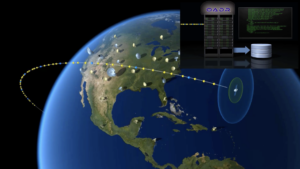
Commerce Department officials on Feb. 11 revealed a prototype for a space catalog and traffic software platform that would provide basic situational awareness and traffic management services.
The post Office of Space Commerce rolls out prototype space catalog for traffic management appeared first on SpaceNews.

